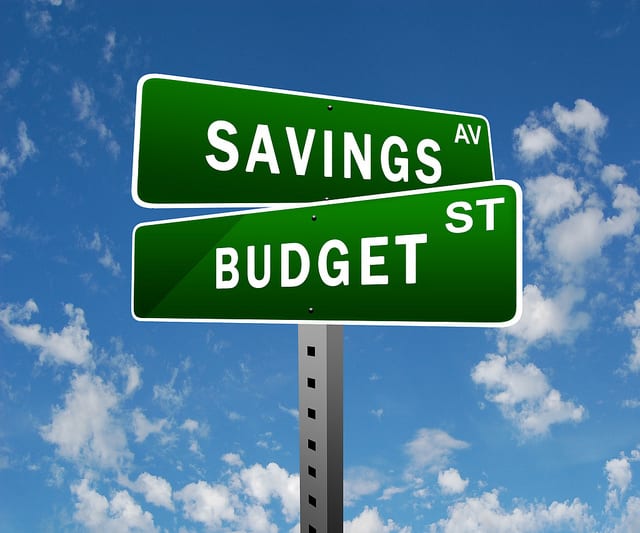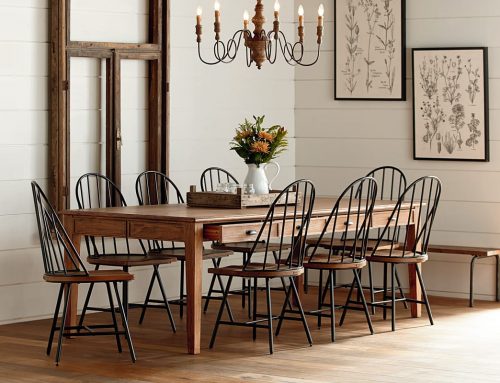This month, we’re focusing on the New Year’s goal of getting your budget under control by reducing the amount that you spend on the trappings of society’s addictive consumerism. While we’re certainly devoting a significant amount of page space to the element of unhealthy consumerism and “stuff” that play a role in that goal, we don’t want to overlook the actual budgeting element of this goal. In additions to the tips, tricks and actual how-to that we’re providing on that topic, we wanted to give you a specific project that is devoted to honing your budgeting skills without considering consumerism in the mix. Today, we’re launching that project to help you create both a short-term budget and a long-term budget.
Step One: Define Short-Term and Long-Term
The truth is that this project will look slightly different for every person doing it. Why is that? Because everybody has a different definition of what short-term and long-term looks like. For us, short-term means 1-3 months and long-term means a year or more. But that may not be your definition. What’s a realistic short-term goal for you? Is it six months? Is it six weeks? Is it six hours? These are all valid time frames, and only you can decide which of them is your short term goal. The same is true of long-term goals. Our one piece of advice, however, is that you don’t want to set your long-term goal too far out. Anything more than 3-5 years starts to feel intangible to the average person (and situations can change dramatically). Take a few moments (or hours, or weeks) and figure out what short-term and long-term means to you when it comes to budgeting.
Step Two: Figure Out How Much Money You’ll Have By Segment During Your Short-Term Time Frame
That’s a long title for step two, but it’s actually a lot easier than it sounds. We’re big on breaking time frames down into smaller, more manageable time frames and then dealing within them. Even for a short-term goal, this is useful and, some would argue, critical to success. So, if your short-term goal is one week, use mini-increments of one day. If your short-term is one-year, use mini-increments of one month. However small you need to break it down is based on however small you made your short-term goal.
After you’ve broken your short-term goal down into mini-increments, figure out how much money you have to spend within each increment. If you’re dealing in days, take your available cash for the week and divide it by seven (though you may want to assign more money to the weekend when you are more likely to spend on leisure material). If you are dealing in a year, simply assign your monthly take-home income to each month or the fraction of it that you are willing to spend instead of save.
Now you’ll need to build the first of your budget tools. We recommend spreadsheet format, and there are plenty of online tools to teach you how to use a spreadsheet if you want help. Assign an entire sheet for each mini-increment of your short-term goal and then note the amount of money that you’ll have available.
Step Three: Estimate What You’ll Spend to Stay Within Budget
No goal succeeds without a plan, so now it’s time to think realistically about both the expenses that you can’t avoid (like rent and bills) and those that you’ll want to enjoy (like a meal out or a movie) during each mini-increment. Create a line item for each expense. Then total them up. Are you still within or under your budget for the mini increment? If you’re not, then you need to start to shave off expenses somewhere.
A pro tip though, and a very important one, is that if you’re coming in right on budget then you won’t meet your goals. If there’s one thing that we all know, it’s that unexpected expenses always come up. There’s always the sudden car or home repair or the need to travel to see an ill loved one. Even the unplanned night of fun and joy can result in unexpected cash outflow. These expenses always happen. You need to be planning to come in under your anticipated budget or you will end up over it.
Step Four: Track Your Actual Expenses
Now comes the meat of the project. You’ll need to track and enter into your budget exactly how you did spend your money during your mini-increment. We recommend doing this as frequently as possible both because it will keep you on track and accountable and because the longer you wait to enter information the more likely it is that you’ll forget about it or overlook it. Remember, you’re trying to both create an accurate picture of where you are and aren’t meeting your budgeting goals as well as find ways to adjust your spending so that you do meet your budgeting goals. The only way to truly and effectively do that is to compare how you thought you’d be spending your money with how you’re actually spending your money.
Another pro tip, however, is to remember that those unexpected expenses do happen and while you do need to account for them you don’t need to beat yourself up for having them.
Final Step: Lather Rinse Repeat for the Long-Term Budget
To create your long-term version of your budget, just follow the steps you used above but apply them to your long term goal and increments.
How Will This Help You?
Creating your budget and giving it tangible form is the first step to getting your budget under control. Once you have a true picture of what’s coming in, what’s going out and how you think that you can strategize it, you can start to make changes to get your monthly numbers where you want them to be. The process isn’t short and it can be taxing on the brain (no pun intended), but it’s worth it in the end.
Follow along with our January 2017 resolution of learning to control our budgets by spending less money on “stuff” and letting go of addictive consumerism on the social media channels below.
Facebook | Twitter | Instagram | Tumblr | Pinterest | Google+ | Medium
Photo Credit: 401(K) 2012 via Flickr




